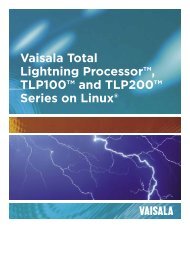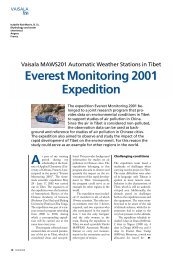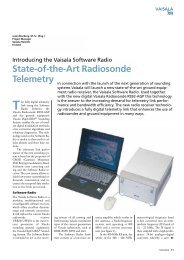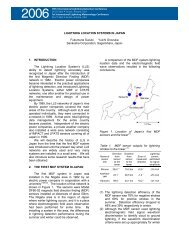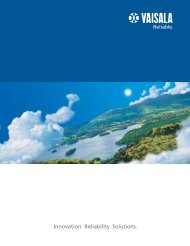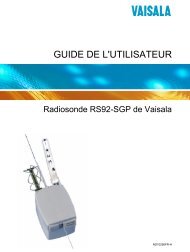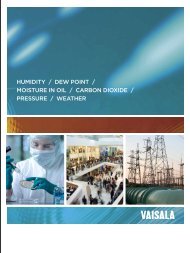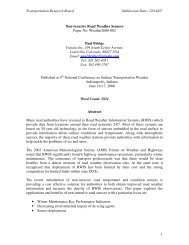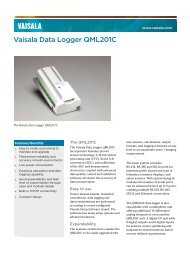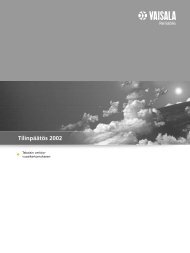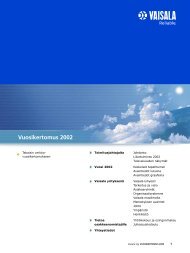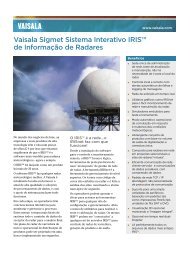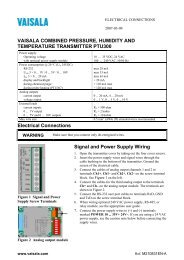Robert Jallan'go Akello, PhD e-mail: rjakello@yahoo.com ... - Vaisala
Robert Jallan'go Akello, PhD e-mail: rjakello@yahoo.com ... - Vaisala
Robert Jallan'go Akello, PhD e-mail: rjakello@yahoo.com ... - Vaisala
- TAGS
- akello
- vaisala
- www.vaisala.com
Create successful ePaper yourself
Turn your PDF publications into a flip-book with our unique Google optimized e-Paper software.
Houses, trees and rocks are either burnt or split and uprooted by lightning.<br />
Most vulnerable are the highly flammable grass thatched houses and rocks with no traces of<br />
conducting minerals. Soft bark trees without capillaries on them are less affected. Of this lot<br />
is the eucalyptus.<br />
III. METHODS OF PROTECTION.<br />
The protection is undertaken for<br />
3.1: Buildings:<br />
Lightning Conductors (LCs) are provided especially to buildings. Initially, people got this<br />
concept from observations of the colonial buildings. They therefore erected some sort of<br />
protection with a sharp metal on the building, with a down conductor to the earth. These LCs<br />
were therefore not professionally designed.<br />
Professional design started with the appreciation of Standard Codes of Practice. The<br />
Kenyan Code of Practice was developed by the National Lightning Committee in 1989. It is a<br />
<strong>com</strong>bination of many standards which were available at that time. Initially, it re<strong>com</strong>mended<br />
that the designs be based on the Faraday Cone but was later changed to be on the Rolling<br />
Sphere Concept.<br />
The handicaps are that first, there is no Enforcing Agency to ascertain that the Code is<br />
followed. Secondly, there is no regular maintenance for both the down conductors and the<br />
earthing.<br />
Finally, there are <strong>com</strong>panies, such as HELITA of France and Lightning Eliminators Inc. of the<br />
USA respectively marketing LPSs such as the PULSAR Series and Dissipators in the East<br />
African market. The effective superiority of these LPSs seem not to be proven<br />
internationally, ore so in East Africa, where there are no test facilities for confirmation of the<br />
performance characteristics of the LPSs.<br />
3.2: Power Infrastructure.<br />
Power lines in East Africa is transmitted at 220, 132, 66, 33 and 11 kV and distributed at<br />
240V. These traverse areas with large populations.<br />
Most affected are Surge Diverters at 11kV and 240V leading to long term vulnerability of<br />
transformers at these levels. Table 1 below indicates the transformers damaged over a<br />
period of the past 5 years.<br />
YEAR REGION SDs TRANSFORMERS<br />
2001 Western 15 7<br />
6<br />
6



